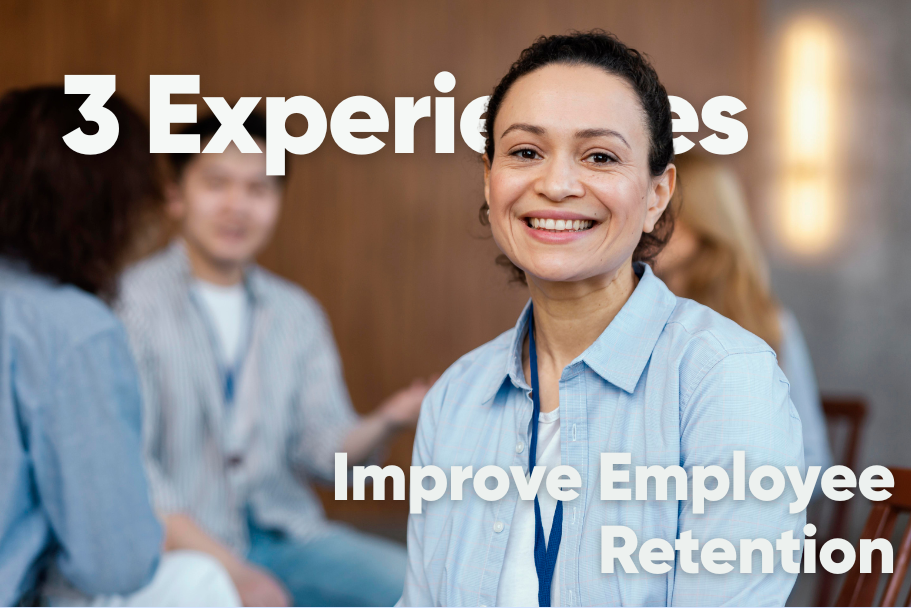
Best Workplaces, Employee Engagement , Employee well-being, Employee Survey
Mental wellness isn’t a metric that is easily measured. Its importance to organizational success however, is as critical as gross margin, ROI and lead conversion rate. While the latter can be calculated using quantifiable data, mental wellness relies on more subjective data that is often gathered through an employee well-being survey. And the Best Workplaces™ for Mental Wellness use these employee well-being surveys strategically, making them a core part of their key performance indicators (KPI) and using them to drive measurable results.
In fact, using our Trust Index survey as part of their overall approach to tracking mental wellness, employees at the Best Workplaces on our Mental Wellness list report an average 91% agreement with the statement, “This is a psychologically and emotionally healthy workplace.”
Other key findings include:
96% of employees agree: My manager recognizes honest mistakes as part of doing business.
95% of employees agree: I can be myself with my team.
92% of employees agree: People avoid politicking and backstabbling as ways of getting things done.
91% of employees agree: People are encouraged to balance their work life and their personal life.
This is the sort of insight into mental wellness you can gather when you use employee well-being surveys on a regular basis. And given the state of our world and economy, mental health simply has to be top-of-mind for organizations to function successfully. And it has to be tracked, measured and monitored effectively to make sure employees know their mental health is a priority and not just part of slick recruiting message.
The Best Workplaces understand that asking questions is only the first part of the equation – more importantly organizations need to follow up and follow through to ensure that what they are doing is actually working and resonating with their people. Creating this connection is crucial and there are some key areas that organizations can concentrate on to support mental health and create a culture that prioritizes mental wellbeing.
Make Mental Wellness a Priority
Signal to your people that their mental health is a top concern through dedicated resources and positive leadership examples.
- Hire or appoint a senior leader to take accountability for mental wellness and send a clear message from the top that mental health is indeed an organizational priority.
- Use employee well-being surveys regularly and ask questions related to employee experience with mental wellness, awareness of supports available and how supported people feel by management.
- Encourage people to reduce their overall stress before it gets to a point where it needs to be managed.
- Provide programs and support for people to find balance whether that means offering flexible schedules, additional time off or simply being mindful that people need time to address responsibilities outside of work.
- Ensure your people have outlets for having fun at work. From informal chats to walking clubs to friendly competitions; laughing and spending time with teammates is a great way to promote and prioritize mental wellness.
- Provide equivalent support for mental wellness as physical wellness through your benefits program including elements like childcare/eldercare, counseling and EAPs and where possible extend benefits to families as well.
Actively De-Stigmatize Mental Wellness
Dealing with a mental health issue is still stigmatized as something that happens to ‘other’ people and this prevents people from seeking the support they need. Be proactive in your efforts to bring mental wellness to the forefront of conversations about health in general.
- Talk about mental wellness in the broader context of inclusivity and make sure everyone feels accepted, seen and supported no matter what issues they are dealing with.
- Create anti-stigma campaigns around mental wellness to let people know that wellness is holistic and includes physical as well as emotional, social and psychological wellness.
- Aggregate results from your employee well-being surveys to show how many employees within the organization are experiencing (or have experienced) mental health struggles.
- Role model healthy mental health behaviors at the leadership level by taking holidays, setting no-meeting zones, and talking openly about personal struggles.
- Host educational sessions to equip everyone with the tools they need to manage their own mental health and recognize signs of distress in others.
- Include substance abuse in your discussions about mental wellness, recognizing that this is a common method used to cope with mental unrest.
Promote Your Mental Wellness Supports
Along with de-stigmatizing mental wellness, it’s important to proactively promote the supports you put in place so that people know where to turn if/when they need it. When people find themselves needing mental health services, it’s probably not the best time to be searching what is available.
- Use pulse surveys to better understand the level of mental health awareness within your employee groups.
- Tailor communication to specific employee groups to ensure all employees are aware what is available to them. As part of this use a wide range of channels to ensure the message gets through to all employee groups and types.
- Actively poll your people on the effectiveness of the supports you have in place and measure who uses what.
- Analyze reports from your EAP and other mental wellness providers to understand patterns and engage them to speak directly to your people on the services they offer and how to access the services when and where they need them.
- Consider adding digital wellness apps to your supports. These apps put your people in control and make access quick and easy. They also encourage people to think about mental health on a daily basis (i.e. meditation or mindfulness), which encourages familiarity with, and acceptance of, mental health services.
Continuously Monitor and Measure Mental Wellness
As with most metrics, you need to monitor what is working and measure your success over time to ensure that what you offer is effective. The original aim is often to increase employee engagement and satisfaction and this can then be expanded overtime.
- Use your employee well-being survey to establish a baseline in terms of what you offer and how employees feel about it.
- Gradually broaden your scope to include measurements that link mental wellness and metrics like workplace productivity, absenteeism or injuries.
- Add tools like focus groups and panels to better understand your employees’ experiences on a more personal level. Then make adjustments to your programs accordingly.
- Encourage managers to have one-on-one mental health discussions with their people and make supporting mental health part of your leadership performance criteria.
Mental wellness is everyone’s concern and the Best Workplaces featured here are making solid and consistent strides to advance mental health within their organizations. They use employee well-being surveys as a key tool to analyze what their people need and want and they follow-through with programs and policies aimed at increasing engagement and improving mental health overall. Mental wellness isn’t a destination; it’s a journey that everyone needs to go on together and by keeping the communication open, the efforts genuine, and the leadership focused, the journey can be very successful. We designed an employee well-being survey – based on 30+ years of studying employee experience – to measure and track levels of employee mental health, trust, recognition, and more. Contact us about it today.
About Great Place to Work®
Great Place to Work® makes it easy to survey your employees, uncover actionable insights and get recognized for your great company culture. Clients apply our insights, advice, and tools to fuel the vision, decisions and actions that drive business performance. 






